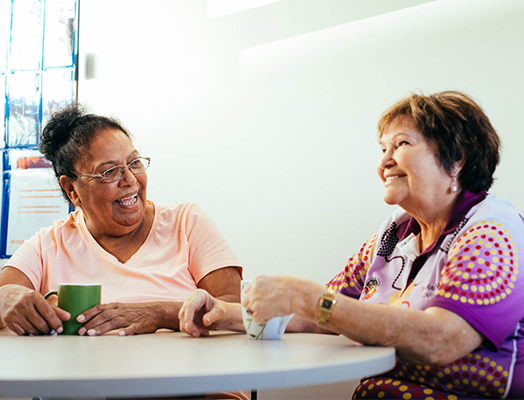Aboriginal and Torres Strait Islander users are advised that this website may contain images, voices and names of deceased persons.
The Aboriginal health workforce plays an integral role in increasing cervical screening participation and helping prevent cervical cancer.
Aboriginal and Torres Strait Islander women are almost four times more likely to die from cervical cancer than non-Indigenous women in Australia due to lower cervical screening rates.1
The good news is that cervical cancer can be prevented by having a Cervical Screening Test every 5 years.
Cervical screening is for well women and people with a cervix with no symptoms who are aged 25-74.
How can Aboriginal women access cervical screening?
There are two ways women can have a Cervical Screening Test:
- they can collect their own sample (also known as self-collection), in private
- a doctor or nurse can collect a sample.
Both options can be accessed at a health care clinic.
The Cervical Screening Test is available through a health care provider at:
- a doctor's practice
- a women's health centre
- Family Planning NSW
- Aboriginal Community Controlled Health Services
A Cervical Screening Test can also be included as part of a 715 Aboriginal health check.
Yarning about cervical screening – how you can help

Use our guide to help you organise cervical screening health promotion activities
Learn how to organise cervical screening health promotion activities that can improve cervical screening in your local area by browsing the online guide.
Promote self-collection as an option
Self-collection is available for anyone who may be more comfortable collecting their own sample. The National Cervical Screening Program has resources to support your work in the community by promoting self-collection.

Join the NSW Aboriginal Cervical Screening Network
This Network aims to increase participation in cervical screening amongst Aboriginal women in NSW. It includes more than 120 health and allied health care workers from local health districts, primary health networks and Aboriginal medical services who share ideas and resources. If you'd like to join the network, contact our team at CINSW-CervicalScreening@health.nsw.gov.au.
By working together, we aim to eliminate cervical cancer by the 2030s.
Explore more resources

Use this guide to gain information and ideas about health promotion activities proven to help increase cervical screening participation.

Access cancer resources for the NSW Aboriginal health workforce. Support mob in prevention, screening, diagnosis and treatment.